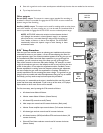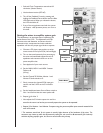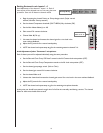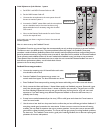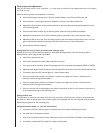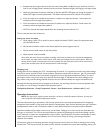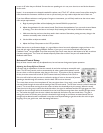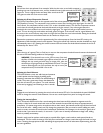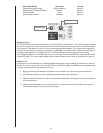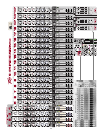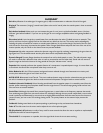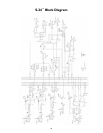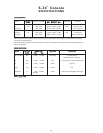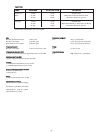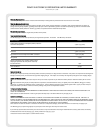
27
GLOSSARY
Gain ➧ Amplification of an audio signal. A negative gain (in dB) is an attenuation or reduction of level of the signal.
Ringing ➧ The resonance (“ringing”) sounds heard (often at the end of words) when the sound system is close to acoustic
feedback.
Gain before feedback ➧ How much you can increase the gain of a mic (turn it up) before feedback occurs. You have
sufficient “gain before feedback” if you can turn up the gain on a mic and get acceptable volume with getting feedback or
ringing.
Directional mic ➧ A mic that picks up sound better from one direction than other. Cardioid mics are an example. They
pick up well from the front, slightly less from the sides and very little from the rear. This can be used to advantage by
reducing the pickup of sound from monitor or sound system speakers. (It only works though if the back of the mic (end
with the cord in most cases) is pointed at the speaker. When a singer bends down and points the front of the mic at the
monitor speaker, only the Ferret or the channel mute can prevent feedback.
Compressor ➧ A audio compressor reduces the dynamic range of an signal by reducing (compressing) the gain when the
signal gets loud. The threshold control sets the point above which compression takes place.
Dynamic Range ➧ Dynamic Range describes the variation from soft to loud speech or music. Too wide a dynamic range
can result in sound that is difficult to hear when it is soft or perceived as too loud when loud. Sound with too narrow a
dynamic range can be hard to listen to for long periods of time (the “elevator music” sound).
Expander ➧ An expander performs the opposite function of a compressor. It expands dynamic range. It is most often used
to turn down the sound from microphones when they are not in use.
Noise Reduction ➧ In the S-24 mix system, background noise is reduced through use of automatic mix circuitry and
circuitry that reduces the gain of mics when not in use.
AUTO-LEVEL ➧ Automatic Level Control. This circuit reduces dynamic range so that the volume does not get too loud or
too soft. It increases the gain at low levels to reduce noise and compresses it at higher levels to control volume.
Feedback (Acoustic Feedback) ➧ Loud howling sound heard from the speaker system. It is caused by sound from the
speaker system reentering the microphone louder than the original sound. The sound keeps getting louder and we hear
what we know as acoustic feedback.
Comb Filter ➧ Although this sounds like a personal hygiene item, it actual refers to the frequency response that results
from combining two signals from one source where one is delayed. Although this may sound complicated, it occurs when
sound is picked up simultaneously by two mics that are slightly different distances from the sound source. As the source
(person) moves, you hear a sort of a swishing phasing sound. The priority feature on the automix helps prevent this
problem.
Foldback ➧ Sending sound back to the person speaking or performing so they can better hear themselves.
Fader ➧ The slide control on the mixer used to adjust the mix of microphone signals.
EQ (Equalization) ➧ Equalization is really a fancy word for tone controls that allow the user to equalize or emphasize/de-
emphasize the sound at certain frequencies.
Threshold ➧ On a compressor or expander, this is the signal level where the circuit starts working.



